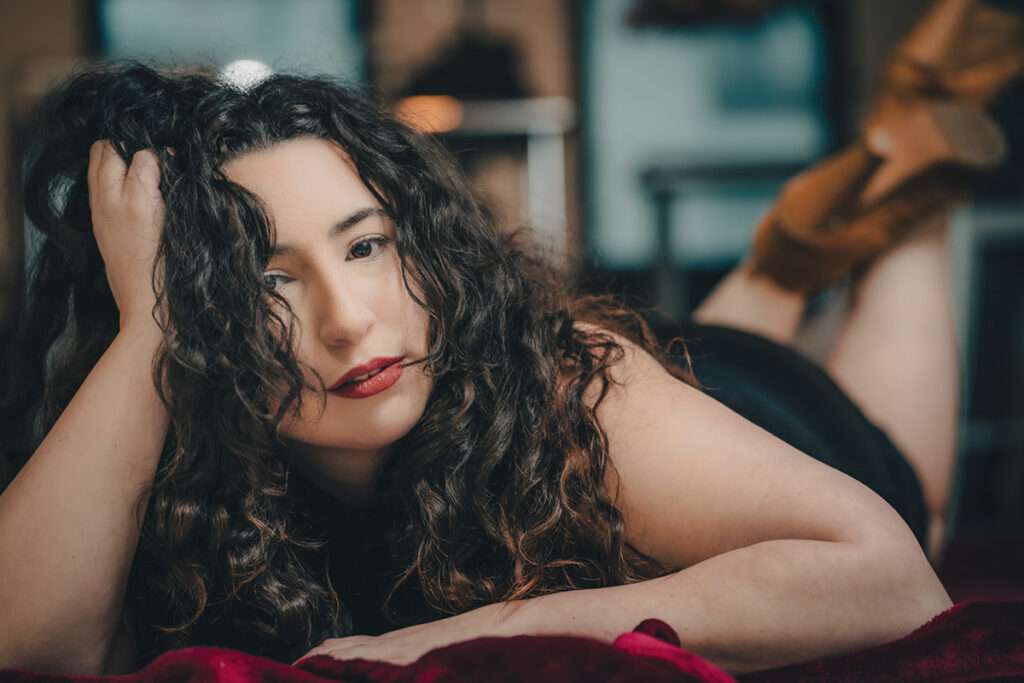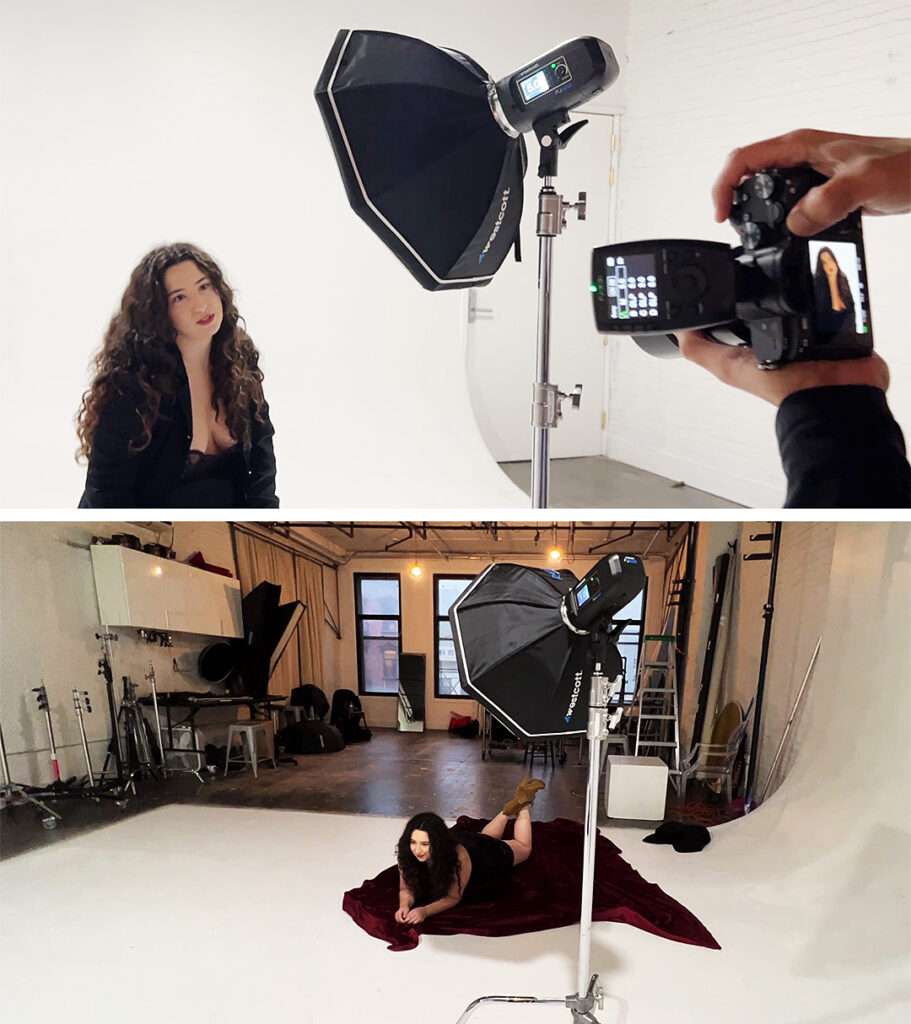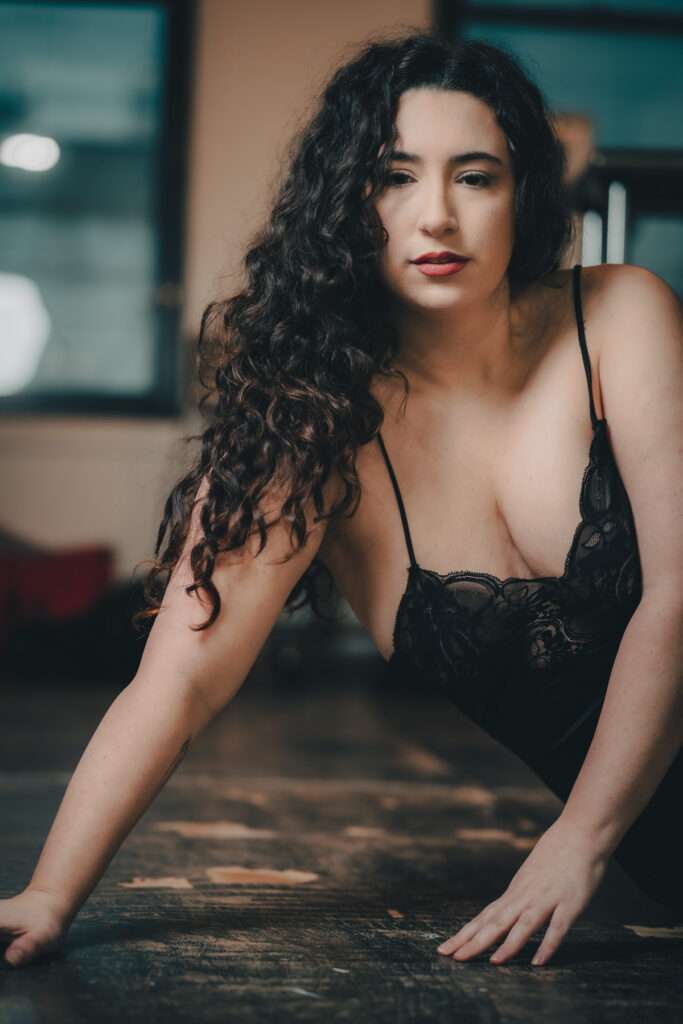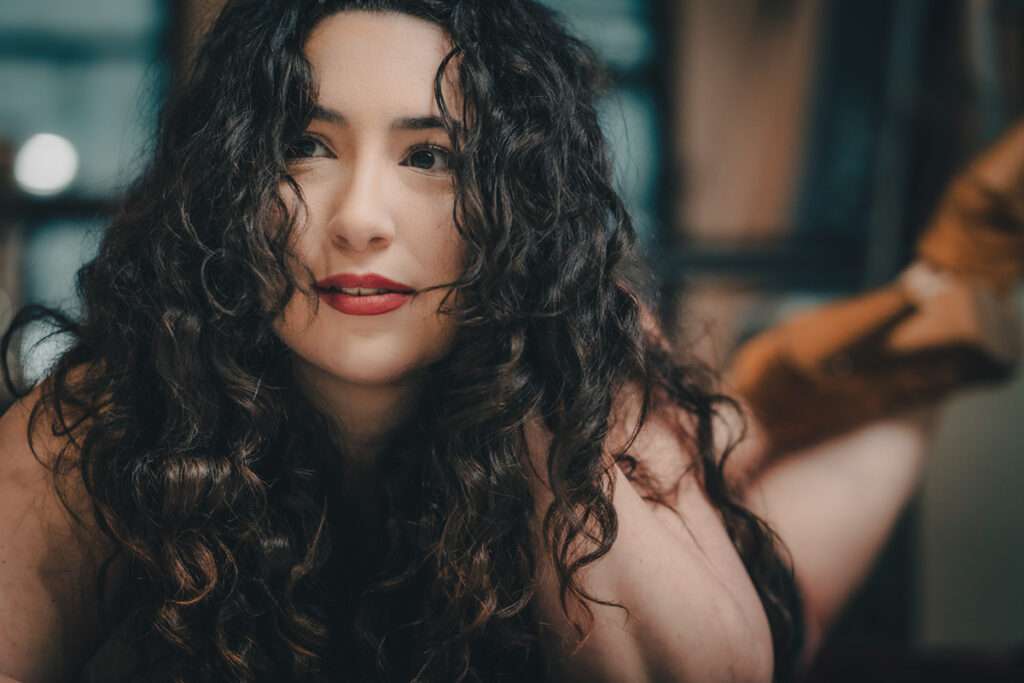
I kinda have a love/hate relationship with small softboxes.
I mean, small softboxes have a lot of advantages; they can be really light and compact – easy to travel with, and easy to use on-location.
Now, the reason most of us want to use a softbox in the first place is because we’re looking for that soft light; we want a wide transition between light and shadow. That’s what a softbox can give us, but only if it’s used within a certain distance from our subject. If the softbox is too far away from our subject, we lose the effect.
Softbox Distance to Subject Rule
So, how far is too far away? Well, the rule of thumb for a portrait is to note the distance across the face of the softbox and then place the softbox about that same distance from your subject.
So, a softbox measuring 24 inches across (around 60 cm) should be placed no further than 24 inches from your subject for a soft-light effect. If you place that same softbox like 6 ft (or a couple of meters) away, the light is going to create a little more contrast.
If you’re working with a much larger softbox, you can place it farther away from your subject and still get a nice soft lighting effect. But to get that same effect with a small softbox, you’ve got to bring it in really close.
So a larger softbox is really the way to go if you’re needing a little more distance and coverage at the same time.
Using a Small Softbox Outdoors
Thing is, if I want to use something like this outdoors, in public, depending on where I’m shooting, it might not be practical to put this on a stand. So, I might need someone to HOLD this for me as I’m shooting. And if that someone isn’t hitting the gym every day, they might not appreciate the weight of a combo like this. And if more than a slight breeze catches it, it’s not going to be fun to deal with no matter how you’re using it.

Enter the Westcott Octa-S. I’ve had this little softbox sitting around for a while. And it’s something that would definitely be easier for an assistant to deal with on location. But it is really small. It comes in at about 2 ft across (60-ish cm), and that means I’d have to get this light up really close to my subject for that full softbox effect that we’re normally going for. And, that effect is only going to be good for a head-and-shoulders shot anyway. So, I wasn’t sure if I’d ever find a good use for it. But if I could get usable light from the Octa-S, it would be awesome to use on location.
Will I Use a Small Softbox for Serious Portraiture?
So, upon heading out to the studio the other day, knowing that I was going to do some dramatic shots, I thought, now’s a good time to try out this little softbox. I wasn’t looking for super-soft lighting, so I knew I could place the Octa-S a little farther than 2 ft. from my subject and still be okay.
I compared the lighting pattern from the Octa-S to a much larger softbox with a grid on it (not shown here). And for upper body and head-and-shoulder shots, I really couldn’t see much of a difference at the distances I was using.


So, what did I learn? I’m now more confident about using a smaller softbox like the Westcott Octa-S when I’m out on-location. I’d prefer using larger softboxes most of the time, but if I’m out in public, and I don’t want to draw too much attention, and I want to be able to move quickly, THIS is something I’ll be using.
👉 All of my gear recommendations available here
Loved this tip? Here's something else you might like:
👉 Free 10-Min. Guide to Off-Camera Flash

